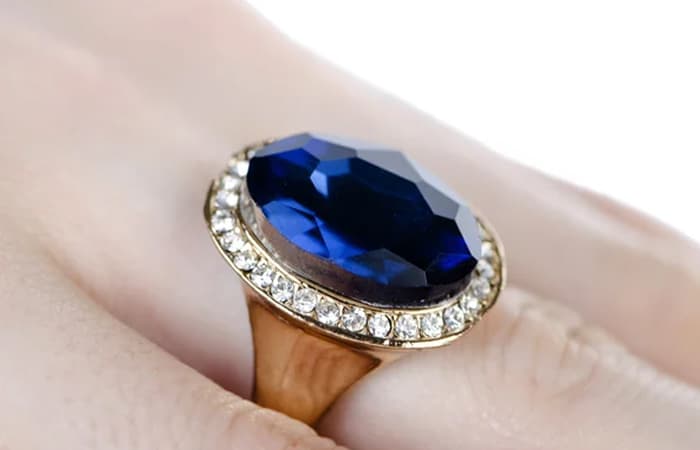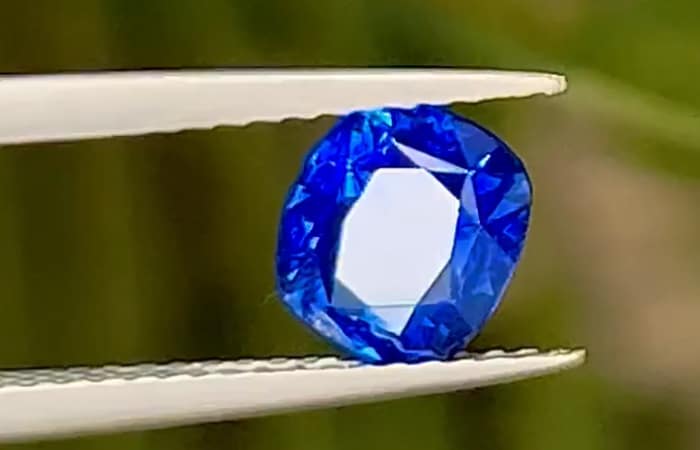Sapphires are part of the corundum family just like rubies. The name itself will make you conjure the image of a stone with dazzling blue color. However, sapphires are not blue all the time, but the blue variety is definitely the most popular one.

Sapphires also come in yellow, white, and even pink colors. The stone also comes in less common colors including green, orange, and violet. Some even change colors depending on the specific lighting.
Interestingly, you won’t find any red sapphires because these are technically rubies, considering that both belong to the same family. The color of the gemstone decides which one it is. A red ruby becomes pink sapphire at a particular color saturation.
Types of Sapphires
The best types of sapphires are always the blue, pink, and pink-orange varieties. When buying a sapphire, always check for the color’s purity. It will be better if there is less pleochroism. Choose a stone with good translucency with medium-dark or medium tones. See to it that there are also no visible flaws or inclusions.
Factors to Consider when Buying Sapphires
Prices of sapphire can range greatly which depends on various factors. You can find sapphires for as low as $25 to more than $11,000 per carat. Blue sapphires of around 1 carat will probably cost you $450 up to $1,600 which depends on quality.
When shopping for sapphire, it is the color that mainly determines the quality of the stone. Unlike the universal grading system that is used for valuing diamonds, 70% of the value of the gemstone depends on its color. There will be a vast difference in the value of two blue sapphires of similar carat weight depending on the color they have.
The shape is another thing to consider when buying sapphire. Due to the stone’s durability and how it was formed, this can be carved into almost all forms you can imagine. A good shape enhances the light going into the stone and making it sparkle. Trillion, square, pear, oval, and round are the most common sapphire shapes. Round cuts in general tend to be a bit pricier.

A sapphire’s size also influences its price. Fine quality sapphires in 1 to 2 carats are quite rate, with medium to lower qualities not that uncommon. Fine quality sapphires in 3 to 4 carats are hard to replace. You can find medium to lower qualities but in limited quantities.
Fine quality sapphires in 5 to 7 carats are very rare and are almost impossible to replace or match. It is also rare to find medium to lower qualities in this size. Fine quality sapphires of 8 to 10 carats are unique, with no two stones ever the same. It is also impossible to maintain a reliable supply. It is also difficult and rare to obtain them in medium to lower qualities.
Fine quality sapphires of more than 10 carats are often called important because these are one of a kind all of the time, extremely expensive in rare, pink, and blue colors. Such stones are reserved for the fortunate and lucky, and not only the affluent. The mere chance of seeing such sapphires in person is already a privilege in itself.
Colors
You can find even-toned sapphires while others have unique color zones. The stone will be more valuable if the color is more even. The best sapphires are those with brightly saturated colors without making the stone dark.
Blue sapphires showcasing a greenish pleochroism belong to the lowest part of the scale. The pink-orange variety, on the other hand, has the highest valuation per carat. As for star sapphires, the contrast between the star and the stone’s color plays an important role in assessing its price.
Clarity
It is very rare to find clear blue sapphires with no inclusions at all. But sapphires are clearer compared to the rest of the corundum family’s stones. The gem’s most typical inclusions are mineral deposits that come in the form of long, thin needles.
Once these needles occur in groups intersecting each other, these are called silk. When the inclusions threaten the durability of the stone, it can lower its price. But the value of the stone can increase if it has inclusions that strew light and give the sapphire a velvety appearance without compromising its clarity.
Star sapphires often have 12, 6, or 4 rays, the most common of which is 6. It is rare to find sapphires with 12 rays. If you want to buy a star sapphire, see to it that the rays converge in the middle of the stone with a uniform length.

Cut
The size and shape of uncut sapphires play an important role in the gemstone’s final cut. Since sapphires are often found in pyramid or barrel form, finished stones usually have a deep cut. A blue sapphire’s cut also makes room for color zones.
A star sapphire is cut as cabochons. The gemstone’s final shape is dependent on the star’s orientation because the stone must look symmetrical. The dome is often two-thirds of the width of the stone.
Carat Weight
A blue sapphire’s size can go as high as hundreds of carats. But most commercial quality sapphires weigh lower than 5 carats. As far as prices and carats are concerned, the stone’s quality is also important. The price of commercial quality 5-carat blue sapphire is just about twice that of a stone with 1 carat. But the price of a fine quality 5-carat sapphire might be 5 times that of a stone with 1 carat.
Setting
As a beautiful stone regardless of the size, sapphire can pair exceptionally well with diamond, which makes a cluster or Halo setting an exceptional choice.
Conclusion
Color is the most important factor to consider when buying sapphires. It is recommended to choose a piece that is vibrant with a tone and hue that you love. Sapphires can also look spectacular whatever the cut is with lots of effects even at the smaller carat weights. Quality sapphires can also be pricey, with their per-carat price dramatically increasing since bigger high-grade stones can be rare.



